Is Oklahoma City's new homelessness plan 'bold enough'? Is there a capacity to do more?
A woman walking alongside a highway, carrying her belongings inside a plastic storage tub. Another living behind Nordstrom with nothing but cardboard for shelter. A couple living out of their van.
Others living under overpasses, behind brick partitions and building alcoves and in dark corners of parking lots.
These were scenes participants found during January's annual count of Oklahoma City's unhoused population, the number of which has not yet been released. The 2022 one-day count found 1,339 people experiencing homelessness, or 195 people per 100,000. This is relatively low compared to other cities across the country, and has remained so despite a growing overall population.
But Councilperson James Cooper told The Oklahoman that Oklahoma City residents and city staffers, when presented with the realities of these unhoused residents, must ask: "Are we OK with that?"
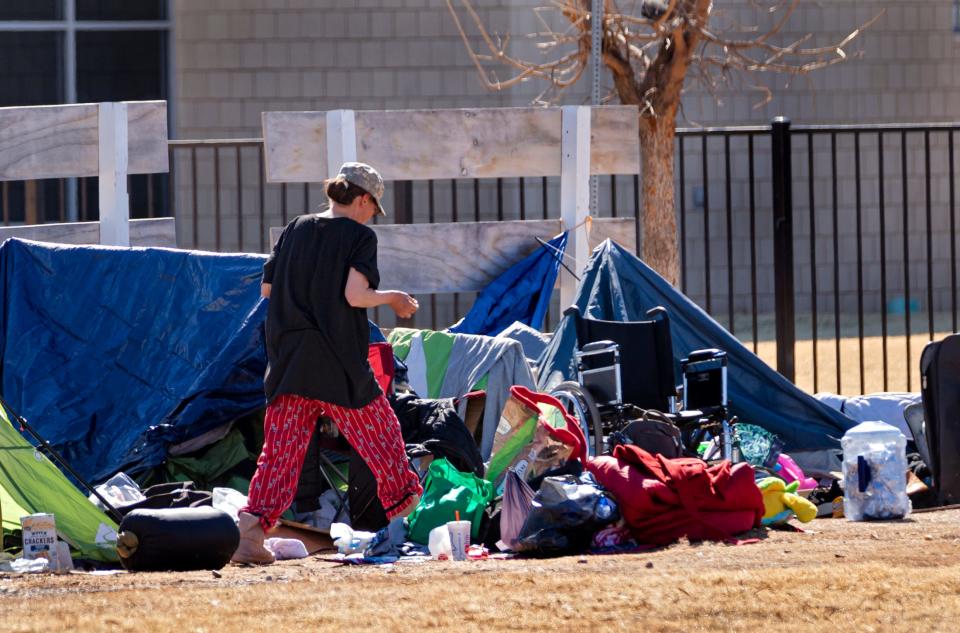
Cooper said he believes Oklahoma City is "better than that," and the city budget should reflect that. Until recently, Cooper said, it has not. And it could be getting even more of a boost.
"The only way we're going to get out of this is by aligning each level of government to invest in solving this problem and having skin in the game," Cooper said. "It's everyone's problem."
What to know: Oklahoma City says it can reduce unsheltered homelessness by 75% in two years. Here's how
OKC wants to reduce unsheltered homelessness by 75% in two years using $12.5 million
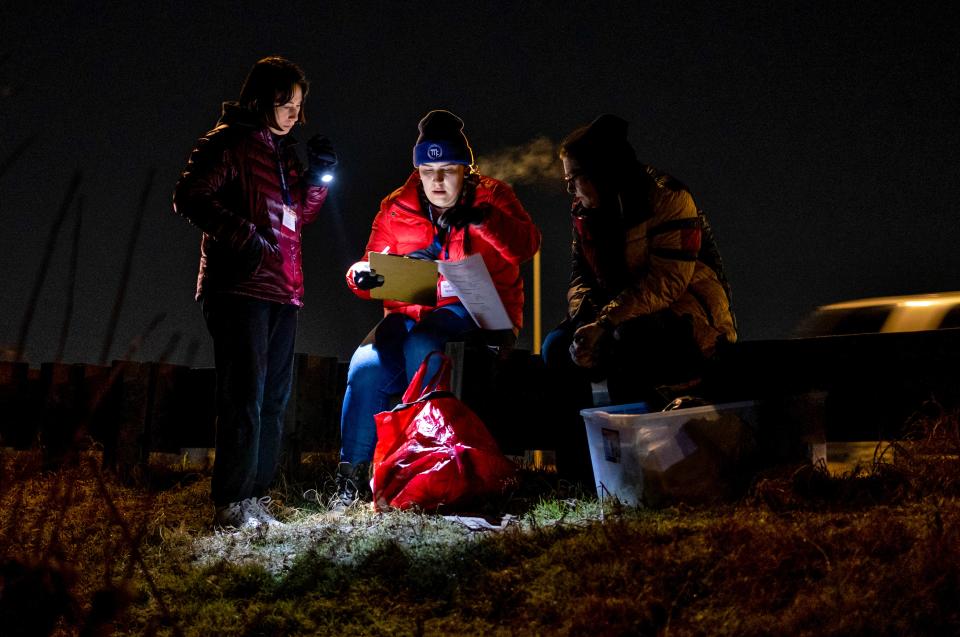
Oklahoma City unveiled a new initiative this week that will fundamentally alter the way it has traditionally managed homelessness, as long as funds are secured from private sources, as well as approved by city council in upcoming budget meetings.
Using a coordinated system between city leaders and service providers, the city plans to clear out homeless encampments one by one for $12.5 million — but no camp will be cleared or closed down without having housing available for every person living there. Two years from now, the city has a goal of 75% fewer people living outside and housing about 500 chronically homeless.
Mandy Chapman Semple, a managing partner for Clutch Consulting, who has helped develop the city's plan, said the funds will help bring together community partners and service providers in ways that haven't been done in Oklahoma City before.
"When it's a series of individual programs, and it's not a well-coordinated and triaged system, we've seen the result, which is worse," Semple said. "So it's like a safety net that has holes in it, is kind of the best way to think about it."
Guest: MAPS 4 funds could have significant impact for Oklahoma City's homeless
While this is a completely new way to address the city's unhoused and unsheltered population — though the model was pioneered in Houston under Semple's leadership — some pointed out that it won't solve everything.
"I worry this plan, while bold, might not be bold enough," Cooper said after the plan was presented to the city council Tuesday.
But, Cooper told The Oklahoman on Thursday, his perspective has shifted some after hearing more about the limited capacity of service providers.
What's stopping OKC from 'doing more' to end homelessness?
Cooper's comment was followed by a question posed by Councilwoman JoBeth Hamon: What's keeping us from doing more, from housing more people?
Though it's a historic investment for the city, Hamon pointed out that $12.5 million in the grand scheme of the city's budget is "a drop in the bucket." Hamon asked, if the city doubled the amount of money, would that double the number of people housed?
Semple said that it's not only a money problem. Even if the city threw millions more at the homelessness issue, it wouldn't necessarily mean more work gets done.
It will take time to build up Oklahoma City's capacity — whether that's available affordable housing or more staff for service providers — to target more homeless populations, such as couch homeless, homeless veterans, youth or families.
"There is nobody on this Earth — other than the people who work day to day in the sector — that want to solve this problem for every single person tomorrow more than us," Semple said. "But we have to also be realistic that we can deliver on what we said. And so it's a combination of what's the capacity that exists, how far can we stretch that capacity and how fast, and what exists in the rental market."
More: OKC's first city-funded non-police homeless crisis response team to hit the streets soon
Cooper cited the fact that Oklahoma City Public Schools reported more than 1,900 of its students are considered "couch homeless," meaning they're not living on the streets but rather staying with a friend and moving from place to place.
The number of adults who are couch homeless in Oklahoma City, which does not fall under the U.S. Department of Housing and Urban Development's definition of homeless, is unknown.
Dan Straughan, who founded the Homeless Alliance 19 years ago, said while he wishes the plan could be bigger and do more, he doesn't feel like anybody is settling for something lesser.
"To go from where we are today to where they're proposing, that's a pretty big step," Straughan said. "And I think if we can show that we're successful, that next step will be that much easier to take."
Lack a funding not the only barrier. Cities need capacity, expert says.
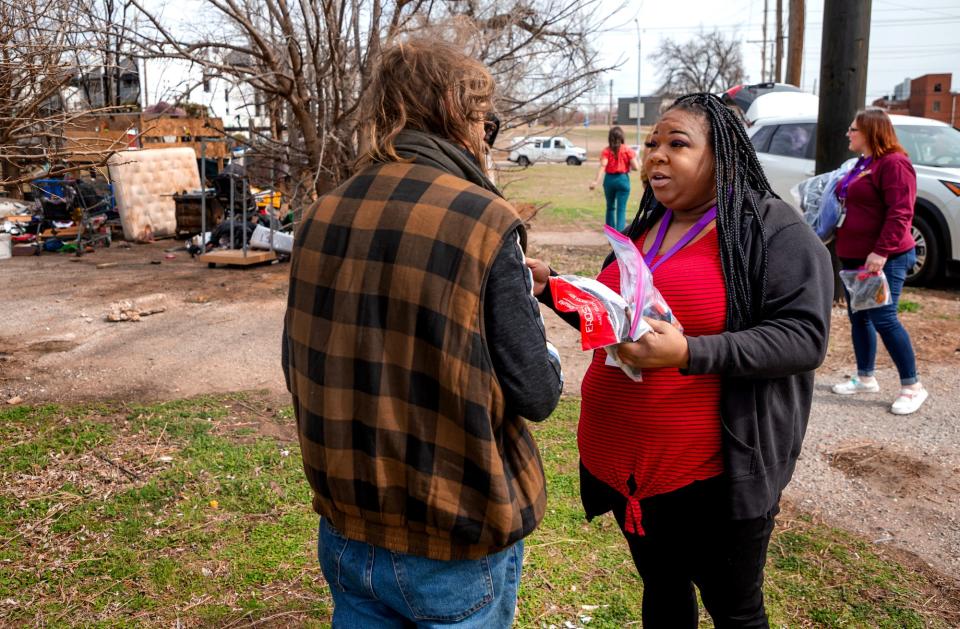
Semple said for years, everyone thought that more funding was the biggest barrier in solving homelessness for cities across the country.
And it's true that there needs to be significant investment from municipal governments, a realization Oklahoma City recently came to, Straughan said.
"Clutch came in and helped the municipal government see they have a much bigger role to play in this system," Straughan said. "And to their credit, they've said, 'OK, we're stepping up.'"
But when the pandemic hit, and subsequently cities saw an influx of federal funds, there was enough money but not enough capacity "on the ground," Semple said.
"When you've been operating from a scarcity model, it means that you weren't positioned with the capacity to seize those resources and to scale very quickly," Semple said.
More: OKC council votes to give housing authority $55M to renovate, build affordable housing
Where is the $12.5 million coming from for this new initiative?
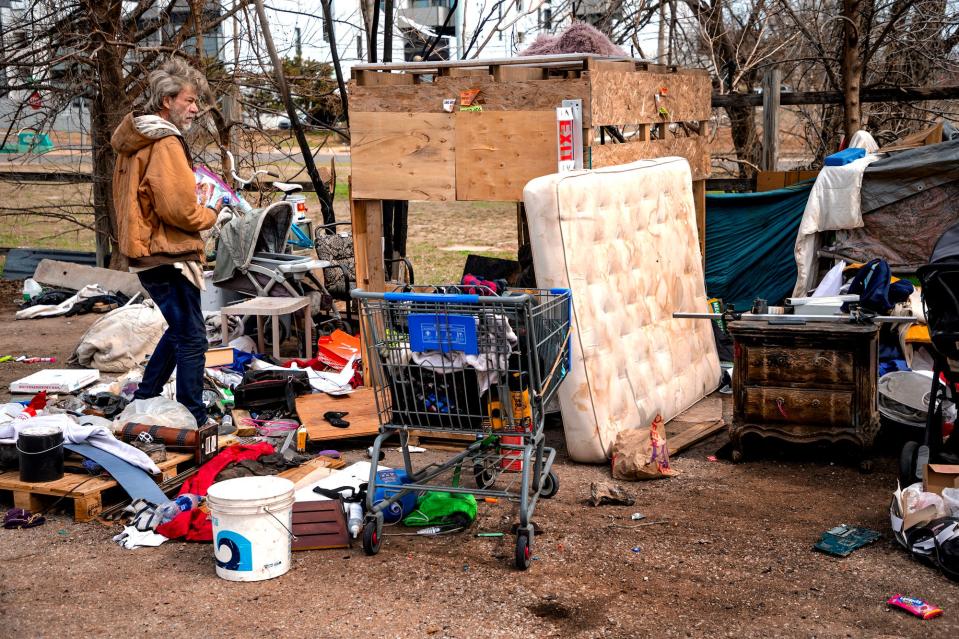
Though this is the city's initiative, only a portion of the $12.5 million will come from the city itself.
About $5 million to $7 million will come from city funds, said Assistant City Manager Aubrey McDermid, part of which would be from federal HUD grants. McDermid said she's still waiting to finalize other funding sources, but that the city also will leverage state Medicaid, philanthropy, corporate partners and individual donors.
"This truly is a public-private partnership in reaching our total program needs," McDermid said.
Here's a list of where funds will go:
$1.3 million on a housing navigation center, which will include interim residential beds
$6.9 million on rental subsidies, including security deposits for 500 people for 1 year
$2 million on stabilization services and case management for 500 people for 1 year
$1 million on landlord incentives and move-in kits, including hold fees, furniture, household supplies and food
$300,000 on an expanded management team
$1 million on administration
McDermid said at $12.5 million housing 500 people over two years, it'll come out to about $24,000 investment per person.
"When you break it down to the costs we spend per person to house them, to get them on a better path, it is a bargain," she said.
Lindsay Cates, strategy implementation manager for the city's Homeless Services department, said these funds won't be paying for counseling or rehabilitation services for those who may need it. It will simply be ensuring they have a case manager who is connecting them with those resources.
"Some of those systems are really hard (to navigate)," Cates said. "This does cover the case management, but it doesn't cover specific stabilization services because some people may need very little and some may need more intensive services."
The housing navigation center will be a place people can go for a few days to a few weeks if housing isn't quite ready yet, Cates said. She said she's still waiting on the estimated number of beds, but said the city will be acquiring an existing building that can meet this need.
Existing navigation centers in other cities that have seen success have residential staff and are a place where clients can meet with their case manager and connect with other services, she said.
"The idea would be that this would be a place where there would be a lot of coordination happening for stabilization services to occur while the person is waiting (on housing)," Cates said. "The goal is this is very interim."
'Not just counting people.' Volunteers comb freezing OKC to gather key data on homeless
How does Oklahoma City stack up when it comes to homelessness and funding in other cities?
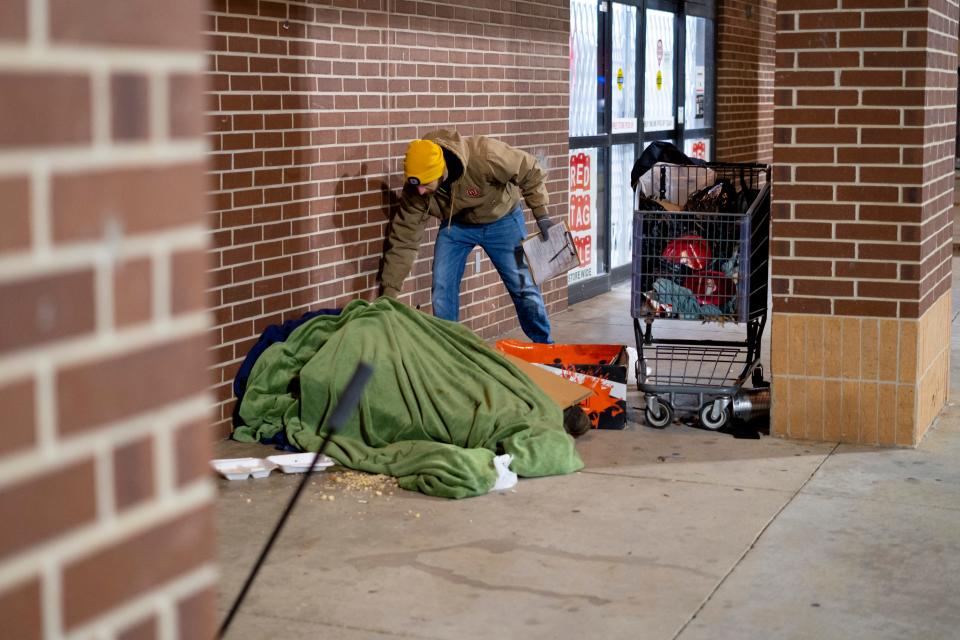
Though Oklahoma City has grown by more than 100,000 in the past decade and is now the 20th-largest city in the nation by population, its annual homeless count has steadily fluctuated between 1,000 and 1,500.
With the 2022 homeless point-in-time count being 1,339, that's only 195 people per 100,000 people. Cities with similar overall populations like Las Vegas and Portland, Oregon, have more than 800 homeless people per 100,000.
And of the $9 million the city is currently expending per year on homelessness services, about two-thirds of that comes from federal grants.
Though Oklahoma City's new encampment decommissioning strategy was pioneered by Houston, Straughan said it's different in that for Houston it was "astronomically expensive" because their homeless crisis was much worse.
Houston spent more than $100 million, Straughan said, when it started. But now, Houston's homeless population per 100,000 is less than Oklahoma City's, at 137. The city announced last year another $100 million investment, and received about $46 million from HUD in annual funding.
Dallas spent $70 million in private and public dollars to start decommissioning encampments in 2020, and recently was given $23 million from HUD to continue its efforts, Semple said.
"We've got to take this next big step," Semple said. "But once you then build this capacity, a year from now or 18 months from now you're going to be in a position to say, 'Now we have capacity, what's the next big move we can make? What's the next big stretch that we can maneuver?'"
Editor's note: A previous version of this story incorrectly labeled homeless population per 100,000 information. It has been corrected.
This article originally appeared on Oklahoman: OKC's new homeless plan: is $12.5 million enough? Can city do more?

